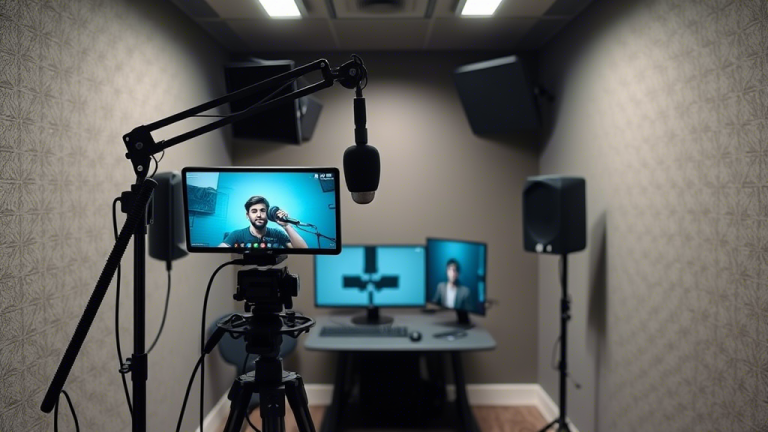Introduction to the Focus Room Concept
The Focus Room is a dedicated space designed to enhance concentration and productivity. In today’s fast-paced world, distractions are everywhere, making it challenging to stay focused on tasks. The Focus Room offers a solution by providing an environment tailored for deep work. This article will guide you through the steps to create your own Focus Room, compare different setups, and highlight the additional benefits of having such a space.
Step 1: Choose the Right Location
Selecting the right location is crucial for your Focus Room. Ideally, it should be a quiet area with minimal foot traffic. Consider spaces like a spare bedroom, a corner of your living room, or even a converted closet. The key is to find a spot where you can work without interruptions.
| Location | Pros | Cons |
|---|---|---|
| Spare Bedroom | Quiet, private | May require furniture rearrangement |
| Living Room Corner | Convenient, accessible | Potential for distractions |
| Converted Closet | Space-efficient | Limited space |
Step 2: Optimize Lighting
Lighting plays a significant role in maintaining focus. Natural light is the best option, but if that’s not available, invest in good quality artificial lighting. Avoid harsh fluorescent lights and opt for warm, soft lighting that reduces eye strain.
| Lighting Type | Pros | Cons |
|---|---|---|
| Natural Light | Reduces eye strain, boosts mood | Not always available |
| Warm Artificial Light | Consistent, reduces glare | May require additional fixtures |
| Fluorescent Light | Bright, energy-efficient | Can cause eye strain |
Step 3: Choose Ergonomic Furniture
Comfort is essential for long periods of focused work. Invest in ergonomic furniture like an adjustable chair and a desk that suits your height. Proper posture can prevent fatigue and increase productivity.
| Furniture Type | Pros | Cons |
|---|---|---|
| Adjustable Chair | Supports posture, reduces back pain | Can be expensive |
| Height-Adjustable Desk | Promotes movement, customizable | Requires more space |
| Standard Desk | Affordable, widely available | May not support ergonomics |
Step 4: Minimize Distractions
Eliminate potential distractions by keeping your Focus Room clutter-free. Use noise-canceling headphones to block out external sounds and set boundaries with family or roommates to ensure uninterrupted work time.
| Distraction | Solution |
|---|---|
| Noise | Noise-canceling headphones |
| Clutter | Regular cleaning and organization |
| Interruptions | Set boundaries with others |
Step 5: Incorporate Technology
Equip your Focus Room with the necessary technology to enhance productivity. This includes a reliable computer, high-speed internet, and productivity tools like task management software.
| Technology | Benefits |
|---|---|
| Reliable Computer | Efficient task execution |
| High-Speed Internet | Quick access to information |
| Task Management Software | Organizes and prioritizes tasks |
Step 6: Personalize Your Space
Personalizing your Focus Room can make it more inviting and conducive to work. Add elements like motivational quotes, plants, or artwork that inspire you and make the space uniquely yours.
| Personalization Element | Benefits |
|---|---|
| Motivational Quotes | Boosts morale |
| Plants | Improves air quality, reduces stress |
| Artwork | Enhances aesthetic appeal |
Step 7: Implement a Routine
Establishing a routine can help you get into the right mindset for focused work. Set specific times for entering and leaving your Focus Room, and stick to them as much as possible.
| Routine Element | Benefits |
|---|---|
| Set Work Hours | Creates structure |
| Regular Breaks | Prevents burnout |
| Consistent Schedule | Builds habit |
Step 8: Use Productivity Techniques
Incorporate productivity techniques like the Pomodoro Technique or time blocking to maximize your efficiency in the Focus Room. These methods can help you stay on track and manage your time effectively.
| Technique | Benefits |
|---|---|
| Pomodoro Technique | Enhances focus, reduces fatigue |
| Time Blocking | Organizes tasks, improves time management |
| Task Batching | Increases efficiency |
Step 9: Monitor and Adjust
Regularly assess the effectiveness of your Focus Room and make necessary adjustments. This could involve changing the layout, updating technology, or revising your routine to better suit your needs.
| Assessment Area | Adjustment |
|---|---|
| Layout | Rearrange furniture for better flow |
| Technology | Upgrade tools for efficiency |
| Routine | Modify work hours or breaks |
Step 10: Enjoy the Benefits
Finally, enjoy the benefits of your Focus Room. Increased productivity, reduced stress, and a better work-life balance are just a few of the advantages you’ll experience.
| Benefit | Impact |
|---|---|
| Increased Productivity | More tasks completed efficiently |
| Reduced Stress | Improved mental health |
| Better Work-Life Balance | More time for personal activities |
User Reviews
“Creating a Focus Room has been a game-changer for me. I can now work without distractions and get more done in less time.” – Sarah L.
“The Focus Room has helped me stay organized and focused. I highly recommend it to anyone looking to boost their productivity.” – John D.
Conclusion
Creating a Focus Room is a practical solution to the common problem of distractions and lack of productivity. By following the steps outlined in this article, you can design a space that enhances your focus and efficiency. The additional benefits, such as reduced stress and a better work-life balance, make the Focus Room an invaluable asset for anyone looking to improve their work habits.
As productivity expert Cal Newport once said, “Deep work is the ability to focus without distraction on a cognitively demanding task. It’s a skill that allows you to quickly master complicated information and produce better results in less time.”


